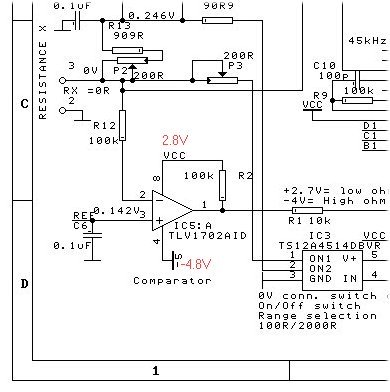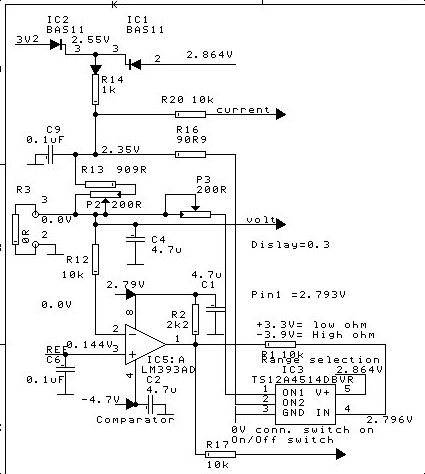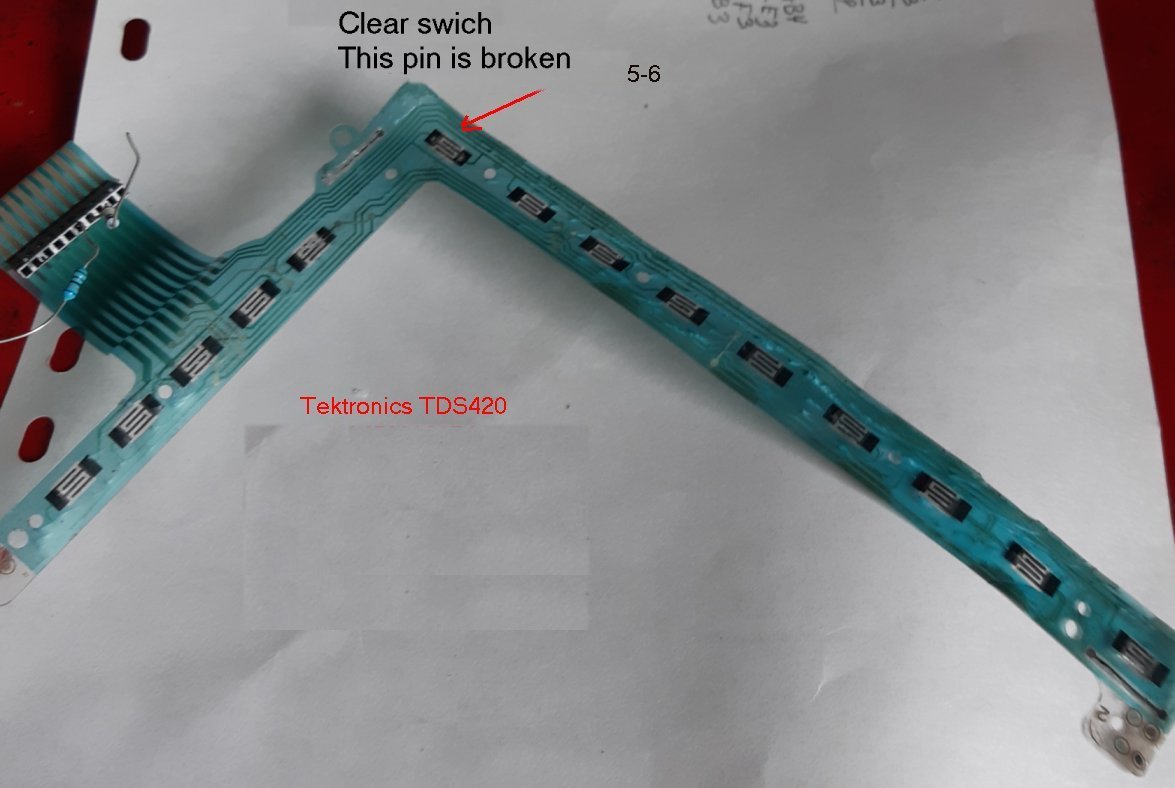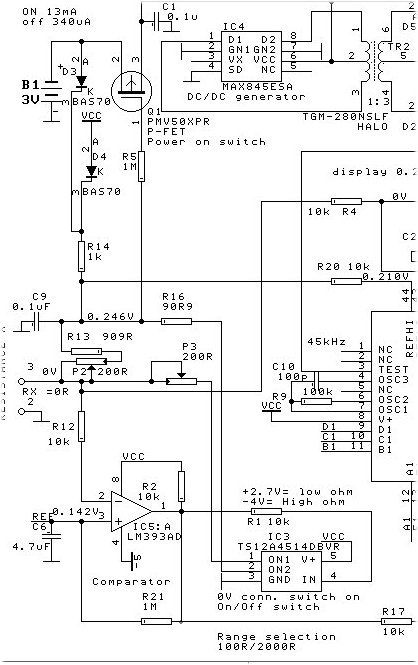Other Parts Discussed in Thread: LM393, LMC6772, LM339
I have a resistor meter with LCD display and ICL7106 AD.
The ICL7106 is quite low resolution 3.5 digits.
I need more from 0.0 ohm to 1999 ohms.
I have made a external range switch with TSA4514DBVR.
It needs a comparator to know when the range switch ( 0.142V this case) works and a decimal point).
TSAA45 should go to open, when I connect resistor input together.
It doesn't work. The output of the TLV1702 ( pin 1) is always down ( -4.8V).
If I switch the rage manually everything works right.
I was wondering if the positive power supply was too low.
So I connected external 1,5V battery to pin 8 Now power was 4.5V, but no help.
Then I I exchanged a new TLV1702 device, no help.
Then I ordered a old LM393 device.
It doesn't work better either.
I wonder what I have made wrong?.
The input pin 2 is 0V and pin 3 is 0.142V, but output is -4.8V.
If I connect pin 2 to pin together, the output goes to 2.8V.
Can the output resistor be too high?
Regards
Pekka Ritamaki
Finland










